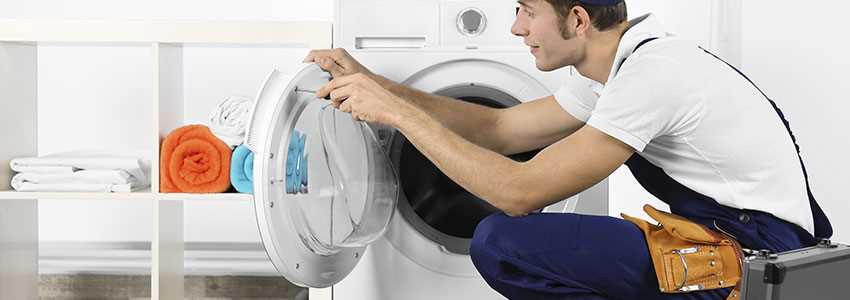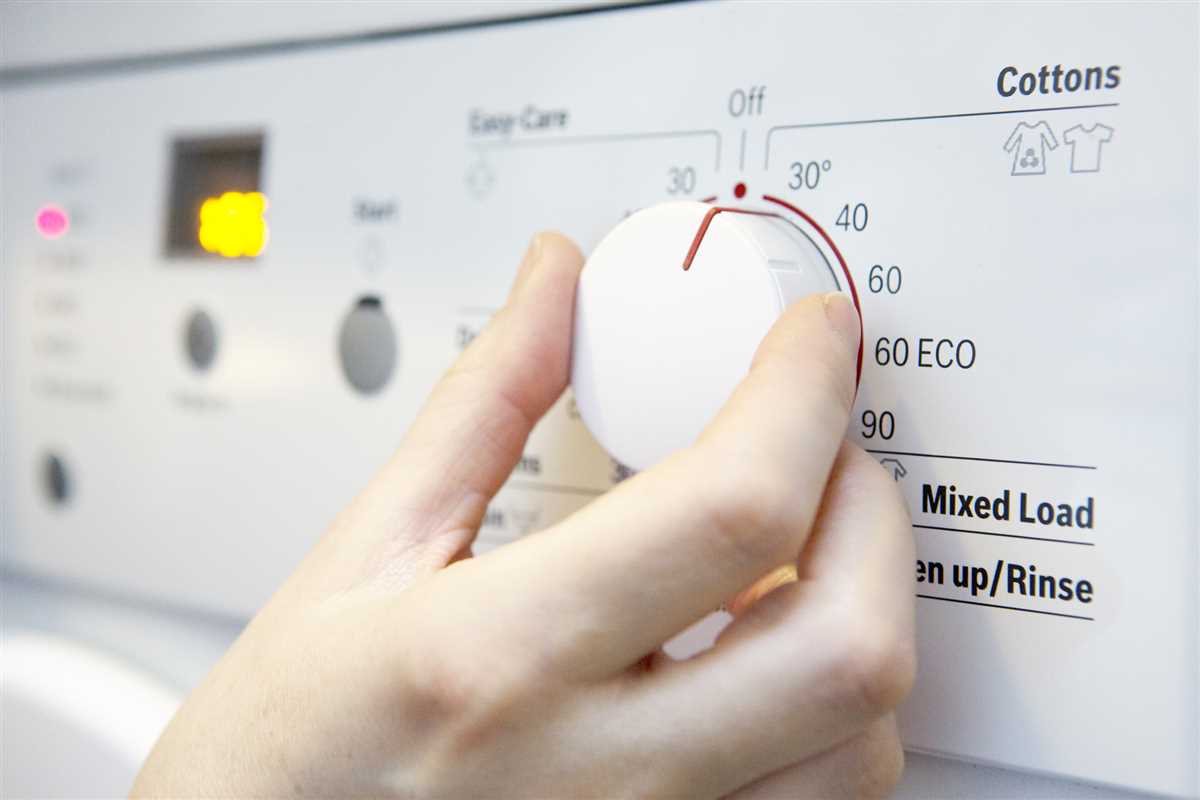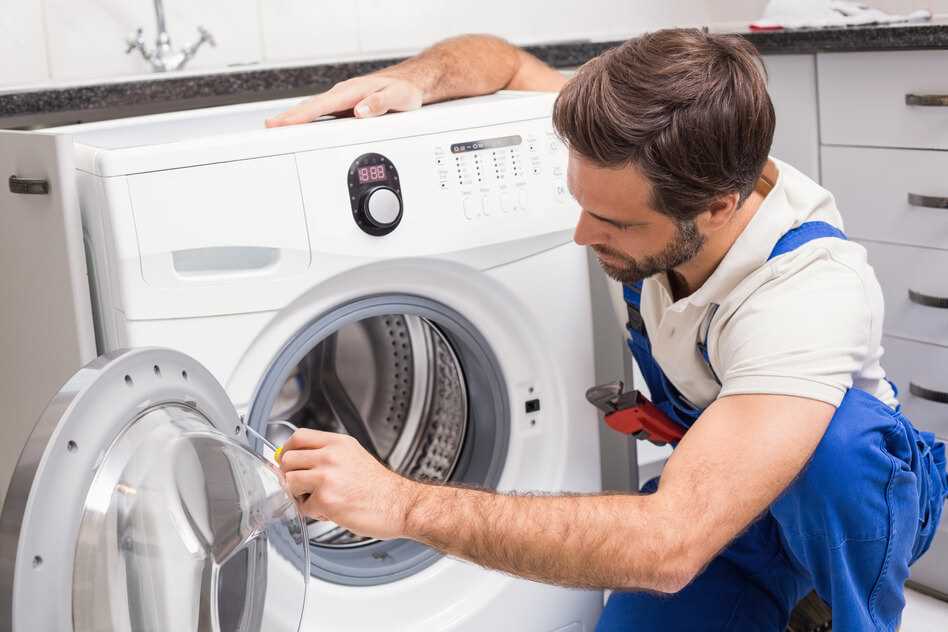
It can be incredibly frustrating when you go to use your washing machine, and you discover that it’s not heating up the water properly. But don’t worry, you’re not alone – this is a common issue that many homeowners face. In this article, we will explore some of the most common reasons why your washing machine may not be heating up, as well as provide you with some solutions to try.
One possible cause for your washing machine not heating up could be a faulty heating element. The heating element is responsible for heating up the water in the machine, and if it’s not working properly, the water may remain cold. You can test the heating element with a multimeter to see if it’s functioning correctly. If it’s not, you may need to replace it with a new one.
Another potential cause for your washing machine not heating up could be a problem with the thermostat. The thermostat regulates the temperature of the water and ensures that it reaches the desired temperature. If the thermostat is faulty, it may not be sending the correct signals to the heating element, resulting in cold water. In this case, you may need to replace the thermostat to resolve the issue.
It’s also worth checking if there are any clogs or obstructions in the water inlet valve. The water inlet valve controls the flow of hot water into the machine, and if it’s blocked, the water may not be able to heat up properly. Try cleaning the valve and removing any debris that may be causing a restriction. If that doesn’t work, you may need to replace the water inlet valve.
These are just a few of the common causes for a washing machine not heating up. Remember to always follow safety precautions when working with electrical appliances and consider seeking professional help if you’re unsure about any repairs. By identifying and addressing the problem, you can hopefully get your washing machine up and running efficiently again.
Common Reasons Washing Machine Does Not Heat Up
When your washing machine fails to heat up the water, it can be frustrating and inconvenient. There are several common reasons why this may occur:
- Thermostat malfunction: The thermostat is responsible for regulating the temperature of the water. If it becomes faulty or damaged, it may fail to communicate with the heating element, leading to no heat production.
- Heating element failure: The heating element is a vital component that heats up the water in your washing machine. If it stops working, the water will not reach the desired temperature. This could be due to a burnt-out element or a loose connection.
- Faulty wiring: A faulty wire connection or damaged wiring can prevent the flow of electricity to the heating element. This can result in the water not heating up properly or not heating at all.
- Clogged filters: If the filters in your washing machine are clogged with debris or dirt, it can restrict the water flow and lead to inadequate heating. Regularly cleaning and maintaining the filters can help prevent this issue.
- Failure of control board or timer: The control board or timer controls the various functions of the washing machine, including the heating element. If it malfunctions, it may fail to activate the heating element, causing the water to remain cold.
- Water inlet valve problems: The water inlet valve regulates the flow of water into the washing machine. If it is faulty or clogged, it may not allow enough hot water to enter the machine, resulting in no heat production.
If your washing machine is not heating up, it is important to troubleshoot the issue to identify the specific cause. This may involve checking the individual components mentioned above, performing basic electrical tests, or seeking professional help if needed. Remember to always ensure proper safety precautions when working with electrical appliances.
Faulty Heating Element

If your washing machine is not heating up, one of the most common causes could be a faulty heating element. The heating element is responsible for warming up the water in your washing machine. If it is not functioning properly, the water will not heat up and your clothes will not be cleaned effectively.
Here are some signs that indicate a faulty heating element:
- The water in the washing machine is not getting hot during the wash cycle.
- The wash cycle is taking longer than usual.
- Your clothes are not coming out as clean as they should be.
- There is a burning smell coming from the washing machine.
If you suspect that the heating element is faulty, here are some steps you can take to troubleshoot and solve the problem:
- Check the power supply: Make sure that the washing machine is properly connected to a power source and that there are no issues with the power supply. If there is a problem with the power supply, you may need to call an electrician to fix it.
- Inspect the heating element: Remove the back panel of the washing machine and locate the heating element. Check for any signs of damage, such as cracks or burns. If you see any damage, you will need to replace the heating element.
- Test the heating element with a multimeter: If you have a multimeter, you can test the heating element for continuity. Set the multimeter to the “ohms” setting and touch the leads to the terminals of the heating element. If the multimeter displays a reading of zero or very high resistance, the heating element is faulty and needs to be replaced.
- Replace the heating element: If the heating element is faulty, you will need to purchase a new one and replace it. Refer to the washing machine’s user manual or contact the manufacturer for specific instructions on how to replace the heating element.
In conclusion, a faulty heating element is a common cause of a washing machine not heating up. By following the steps outlined above, you should be able to troubleshoot and solve the problem. If you are unsure or uncomfortable with performing these steps yourself, it is recommended to seek professional help.
Broken Thermostat
A thermostat is an essential component in a washing machine as it regulates the temperature of the water during a wash cycle. If the thermostat is broken, the machine may fail to heat up the water properly or not heat up at all. Here are some common causes and solutions for a broken thermostat:
- Faulty thermostat: Over time, the thermostat may become faulty and fail to accurately measure the temperature. This can result in incorrect temperature settings and a failure to heat up the water. To fix this issue, you’ll need to replace the faulty thermostat with a new one.
- Loose or damaged connections: Sometimes, the issue may not be with the thermostat itself, but with the connections. Loose or damaged connections can prevent the thermostat from functioning properly. Make sure to check the connections and tighten any loose wires. If any wires are damaged, they should be replaced.
- Buildup of dirt and debris: Over time, dirt and debris can accumulate on the thermostat, affecting its performance. This buildup can interfere with the functioning of the thermostat and prevent it from accurately measuring the temperature. Regular cleaning of the thermostat can help prevent this issue. Use a soft cloth or a brush to remove any dirt or debris from the thermostat.
- Thermostat calibration: If the thermostat is not calibrated correctly, it may not accurately measure the temperature. This can lead to incorrect temperature settings and a failure to heat up properly. Consult the washing machine’s manual or contact a professional technician to calibrate the thermostat correctly.
Remember, if you are not confident in repairing the washing machine yourself, it’s always best to seek professional help. They will be able to diagnose the issue accurately and provide the appropriate solution to get your washing machine heating up again.
Defective Timer

If your washing machine is not heating up, one possible reason could be a defective timer. The timer is responsible for controlling the different cycles of the washing machine, including the heating process. When the timer is faulty or worn out, it can cause the heating element to not receive the proper signals or fail to activate altogether.
Here are some signs that indicate a defective timer:
- The washing machine is not heating up at all
- The heating process is inconsistent
- The timer knob is loose or doesn’t turn smoothly
- The timer doesn’t advance through the different cycles
If you suspect that the timer is the cause of the heating issue in your washing machine, you can try the following solutions:
- Inspect the timer: Check for any visible signs of damage or wear on the timer mechanism. Look for loose connections or burnt components. If you notice any issues, the timer may need to be replaced.
- Test the timer: Use a multimeter to test the continuity of the timer contacts. If there is no continuity when the timer is set to the heating cycle, it indicates a faulty timer that needs to be replaced.
- Replace the timer: If you have identified the timer as the problem, you will need to replace it. Consult the user manual or contact the manufacturer for the specific replacement part that is compatible with your washing machine model.
If you are not confident in handling electrical components or are unsure about the specific steps involved in replacing the timer, it is recommended to seek professional assistance. A qualified technician will be able to diagnose the issue accurately and perform the necessary repairs or replacements.
Malfunctioning Temperature Sensor

A temperature sensor is an essential component of a washing machine that helps regulate the water temperature during the washing cycle. If the temperature sensor malfunctions, it can result in the washing machine not heating up properly. Here are some common causes and solutions for a malfunctioning temperature sensor:
- Loose or damaged sensor connection: Check the connection between the temperature sensor and the control board. Make sure it is securely connected and there are no loose or damaged wires. If necessary, tighten the connections or replace the damaged wires.
- Faulty temperature sensor: If the connection is secure and there are no visible issues, the temperature sensor itself may be faulty. Use a multimeter to test the sensor for continuity. If it does not show any continuity, replace the temperature sensor with a new one.
- Calcium buildup: Over time, calcium and other mineral deposits can accumulate on the temperature sensor, affecting its accuracy. Remove the sensor from the machine and clean it thoroughly with a descaling solution or white vinegar to remove any buildup or stains. Rinse it with clean water and reinstall it.
- Control board issue: If none of the above solutions work, there may be a problem with the control board. The control board is responsible for communicating with the temperature sensor and regulating the heating elements. Consult a professional technician to diagnose and repair any control board issues.
By addressing these common causes of a malfunctioning temperature sensor, you can restore the proper heating functionality to your washing machine and ensure efficient washing and drying cycles.
Electrical Issues
Electrical issues can often be the cause of a washing machine not heating up. Here are some common electrical problems you might encounter:
Faulty heating element: The heating element is responsible for heating up the water in the washing machine. Over time, it can become damaged or burnt out, causing the machine to stop heating. In this case, the heating element may need to be replaced.
Thermostat failure: The thermostat controls the temperature of the water in the washing machine. If it fails, the machine may not heat up properly. A faulty thermostat will need to be replaced to resolve the issue.
Electrical connection problems: Loose or damaged electrical connections can prevent the heating element from receiving power. Inspect the connections and tighten or replace any that appear faulty.
Tripped circuit breaker: If the circuit breaker for your washing machine has tripped, it can cut off power to the heating element. Check the circuit breaker panel and reset any tripped breakers.
Faulty control board: The control board regulates the various functions of the washing machine, including the heating element. If it becomes faulty, it may not send the proper signals to heat up the water. In this case, the control board may need to be repaired or replaced.
If you are unsure about dealing with any electrical issues, it is best to consult a professional technician to diagnose and fix the problem. Remember to always disconnect the washing machine from the power source before attempting any repairs.
FAQ
Why is my washing machine not heating up?
There could be several reasons why your washing machine is not heating up. It could be a faulty heating element, a malfunctioning thermostat, a problem with the wiring, or a blocked filter. It’s best to consult a professional to diagnose the exact cause.
Can I fix the heating issue in my washing machine myself?
Some heating issues in a washing machine can be fixed by DIY methods, such as checking if the heating element is broken or if the wiring is loose. However, it is always recommended to consult a professional for repairs, especially if you are not experienced with working on appliances.
How much does it cost to repair the heating mechanism in a washing machine?
The cost of repairing the heating mechanism in a washing machine can vary depending on the specific issue and the model of your machine. It is best to contact a professional repair service for an accurate estimate.
What are some signs that indicate a heating problem in a washing machine?
Some common signs of a heating problem in a washing machine include clothes not coming out hot after a wash cycle, the machine taking longer than usual to complete a cycle, or error codes related to temperature. If you notice any of these signs, it is advisable to have the machine checked by a professional.
Can a blocked filter cause the heating issue in a washing machine?
Yes, a blocked filter can cause a heating issue in a washing machine. A blocked filter can restrict or prevent proper water flow, which in turn can affect the heating element’s efficiency. Cleaning or replacing the filter can help resolve this problem.
What should I do if my washing machine is not heating up?
If your washing machine is not heating up, there are a few things you can check. First, make sure that the machine is plugged in and receiving power. Next, check the circuit breaker to see if it has tripped. If the power supply is not the issue, you may need to check the heating element. It could be faulty or broken and may need to be replaced. You can also check the thermostat or temperature sensor to see if they are functioning properly.
















